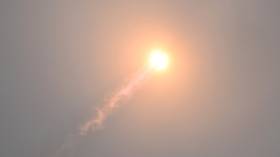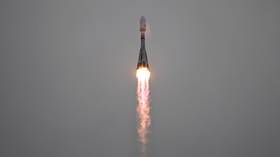Russia receives first data from historic Moon mission

Russia’s space agency Roscosmos confirmed the ongoing Luna-25 mission entered a new phase on Sunday, after the automatic probe successfully switched on its research and equipment.
“All systems of the automatic station are working normally, the connection with it is stable, and the energy balance is positive,” Roscosmos said in a statement. Ground control received telemetry showing all systems are functioning properly, the agency confirmed.
“The first samples of data collected during the flight to the Moon have been received, and the project’s scientific team has begun processing them,” the space agency added.
Luna-25 is modern Russia's first Moon mission, taking its name from the Soviet-era program. A total of 24 Luna probes were launched between 1958 and 1976, achieving multiple important milestones.
The new mission, should it be successful, is set to land the first man-made object on the Moon’s rugged south-polar region. All previous probes have landed in the equatorial regions of the satellite, which are significantly easier to reach. The probe will take samples of the moon’s regolith at the landing site, and will also run multiple long-term scientific experiments.
The mission is expected to land on the Moon by August 21, around two days ahead of India’s fresh attempt to conquer the challenge of the satellite’s polar mountains. New Delhi's mission, Chandrayaan-3, is already in lunar orbit and is expected to descend to the surface by August 23. A previous attempt by India to land in the polar region of the Moon was undertaken by a Chandrayaan mission in 2019, resulting in catastrophic failure and the loss of the mission and its lander, Vikram.













